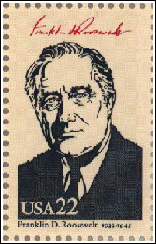Problems And Chalenges Of The 20th Century
By World War I new lands for homesteading were practically unavailable. Overcultivation and a long period of soil erosion had reduced the fertility of much of the United States' farmland. Forests had been cut or burned to provide additional cropland. Vast regions of grasslands on the Great Plains were depleted by overgrazing. In the mid-1930s a series of dry years resulted in extreme crop losses in the Midwest. The winds of the Great Plains caused huge dust storms on overgrazed lands.New land use and conservation policies began to develop to meet this challenge. The government decided farmers needed to be encouraged and educated on the values of better land-use practices. The independent-minded farmers sometimes found it hard to accept that they should think in terms of long-range self-interest rather than next year's crop. Government conservation agents were employed to demonstrate better techniques, and when farmers saw that their neighbors who used new methods were prospering, they began to adopt the new methods. Further, government incentives were offered in the form of free service or even cash payment to improve the land.
In the 1920s, demand for American farm products fell, as European countries began to recover from World War I and instituted austerity programs to reduce their imports. The result was a sharp drop in farm prices. This period was more disastrous for farmers than earlier times had been because farmers were no longer self-sufficient. They were paying for machinery, seed and fertilizer, and they were also buying consumer goods. The prices of the items farmers bought remained constant, while prices they received for their products fell. These developments were made worse by the Great Depression, which began in 1929 and extended through the 1930s.
In 1929, President Herbert Hoover organized the federal Farm Board. It established the principle of direct interference with supply and demand, and it represented the first national commitment to provide greater economic stability for farmers.
 One of the first measures proposed by President Franklin D.
Roosevelt when he took office in 1933 was the Agricultural
Adjustment Act, which was subsequently enacted by Congress. This
law gave the secretary of agriculture the power to reduce
production through voluntary agreements with farmers who were
paid to take their land out of use. The payments were funded by a
use tax paid by food processors. The intent was to raise prices
by limiting the supply of farm goods. This law was declared
unconstitutional by the Supreme Court in 1936 on the grounds that
taxes on food processors could not be used to enforce production
control programs. However, new laws were passed immediately that
achieved the same result of idling soil and providing
flood-control measures, based on the principle of soil
conservation. The Roosevelt administration believed that
rebuilding the nation's soil was in the national interest and was
not simply a plan to help farmers at the expense of other
citizens. Later the government guaranteed loans to farmers so
that they could buy farm machinery, hybrid seed and fertilizers.
One of the first measures proposed by President Franklin D.
Roosevelt when he took office in 1933 was the Agricultural
Adjustment Act, which was subsequently enacted by Congress. This
law gave the secretary of agriculture the power to reduce
production through voluntary agreements with farmers who were
paid to take their land out of use. The payments were funded by a
use tax paid by food processors. The intent was to raise prices
by limiting the supply of farm goods. This law was declared
unconstitutional by the Supreme Court in 1936 on the grounds that
taxes on food processors could not be used to enforce production
control programs. However, new laws were passed immediately that
achieved the same result of idling soil and providing
flood-control measures, based on the principle of soil
conservation. The Roosevelt administration believed that
rebuilding the nation's soil was in the national interest and was
not simply a plan to help farmers at the expense of other
citizens. Later the government guaranteed loans to farmers so
that they could buy farm machinery, hybrid seed and fertilizers.
Other measures were designed to help farm families in the United States. In 1935 Congress established the Rural Electrification Administration (REA), which extended electric power lines into the countryside. Local cooperatives were established and the federal government provided credit for them to build rural power lines. Farmers soon found that electricity enabled them to make great technological advances. By 1960, 97 percent of all farms had electricity. Other assistance to farmers included a network of "farm-to-market roads" that made towns and cities easily accessible to rural areas.
